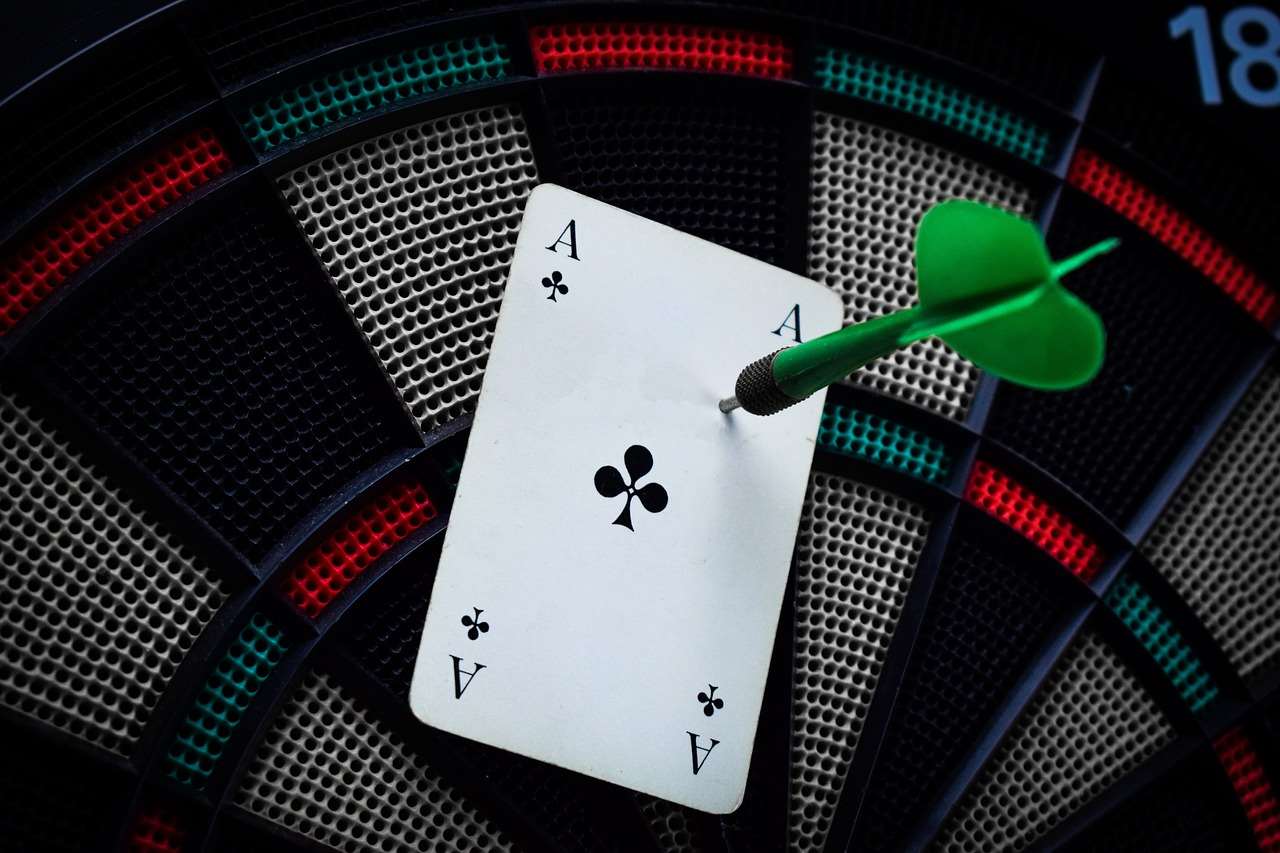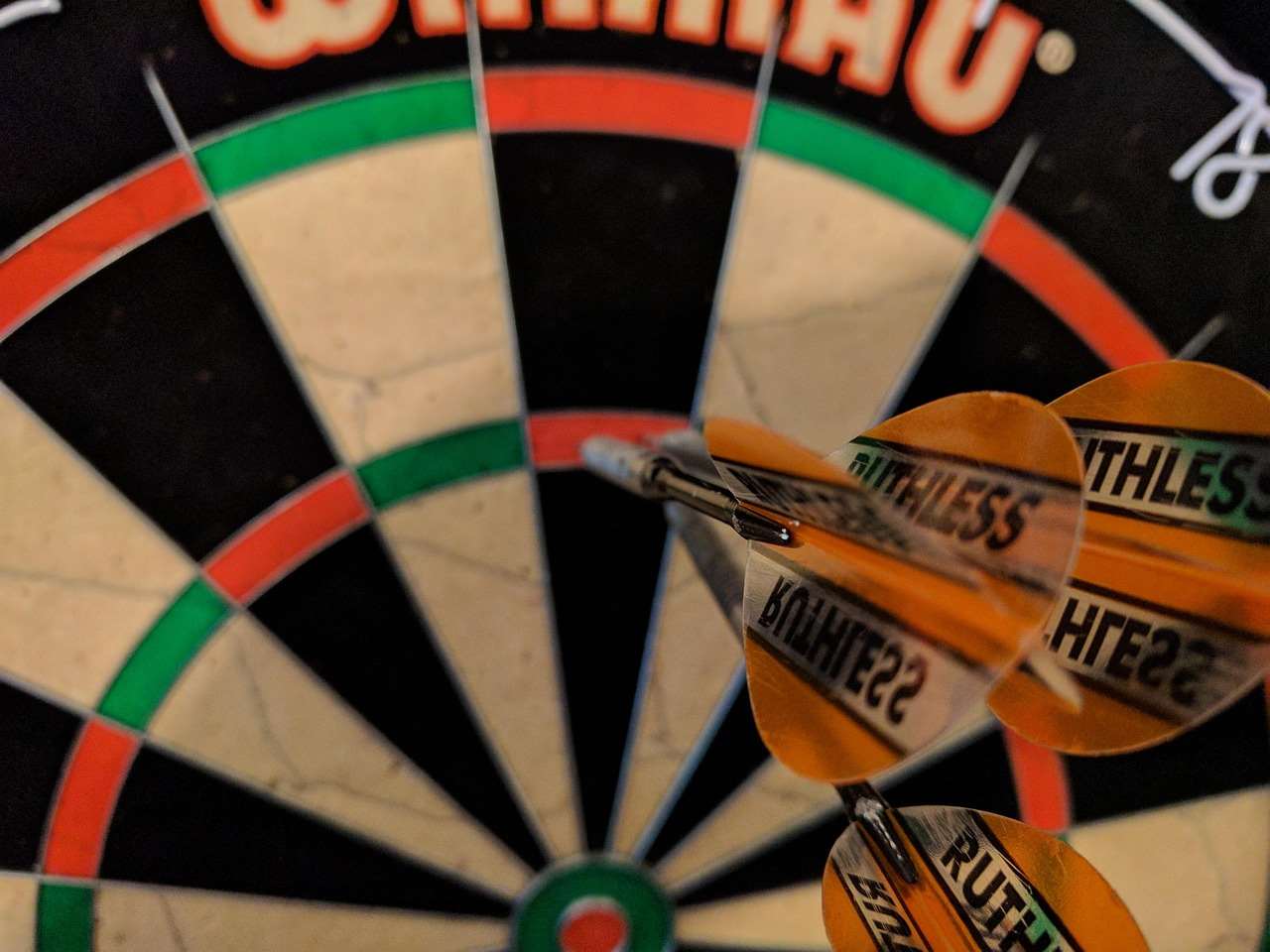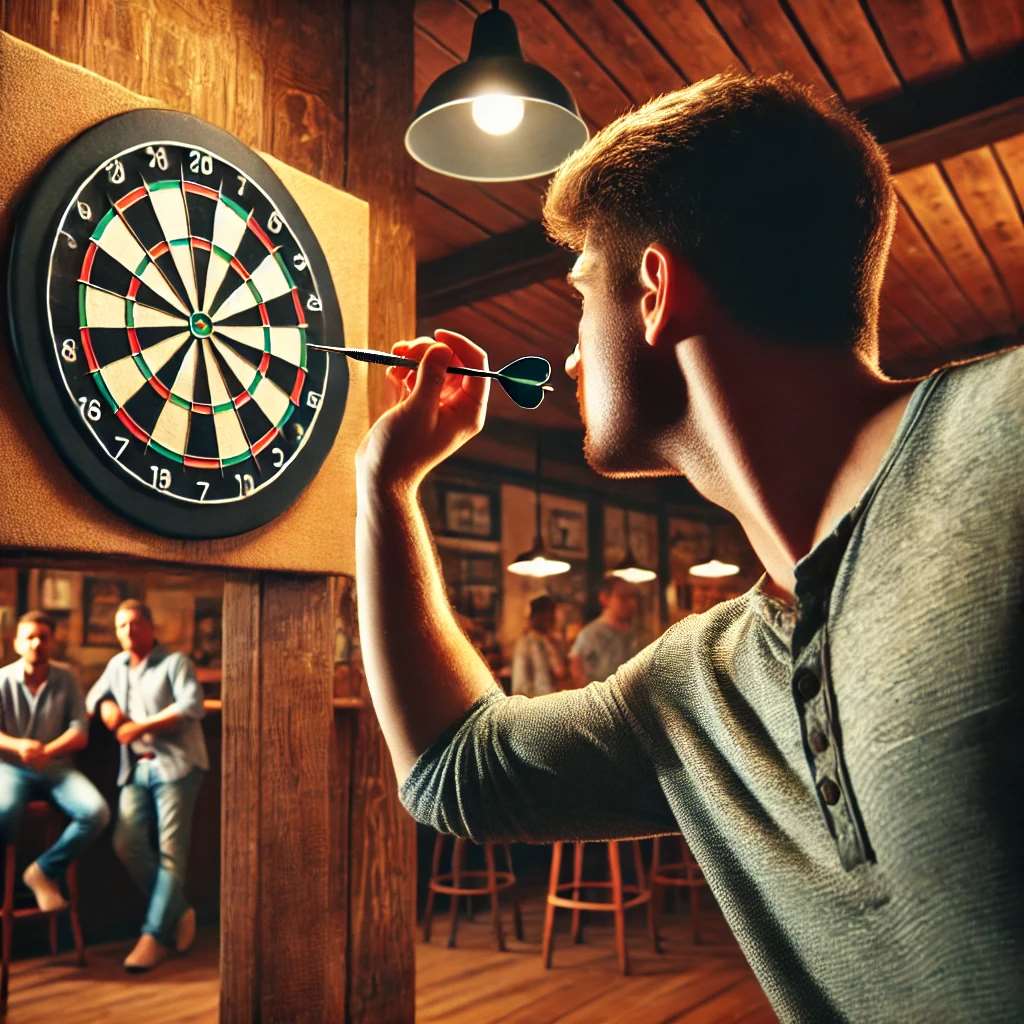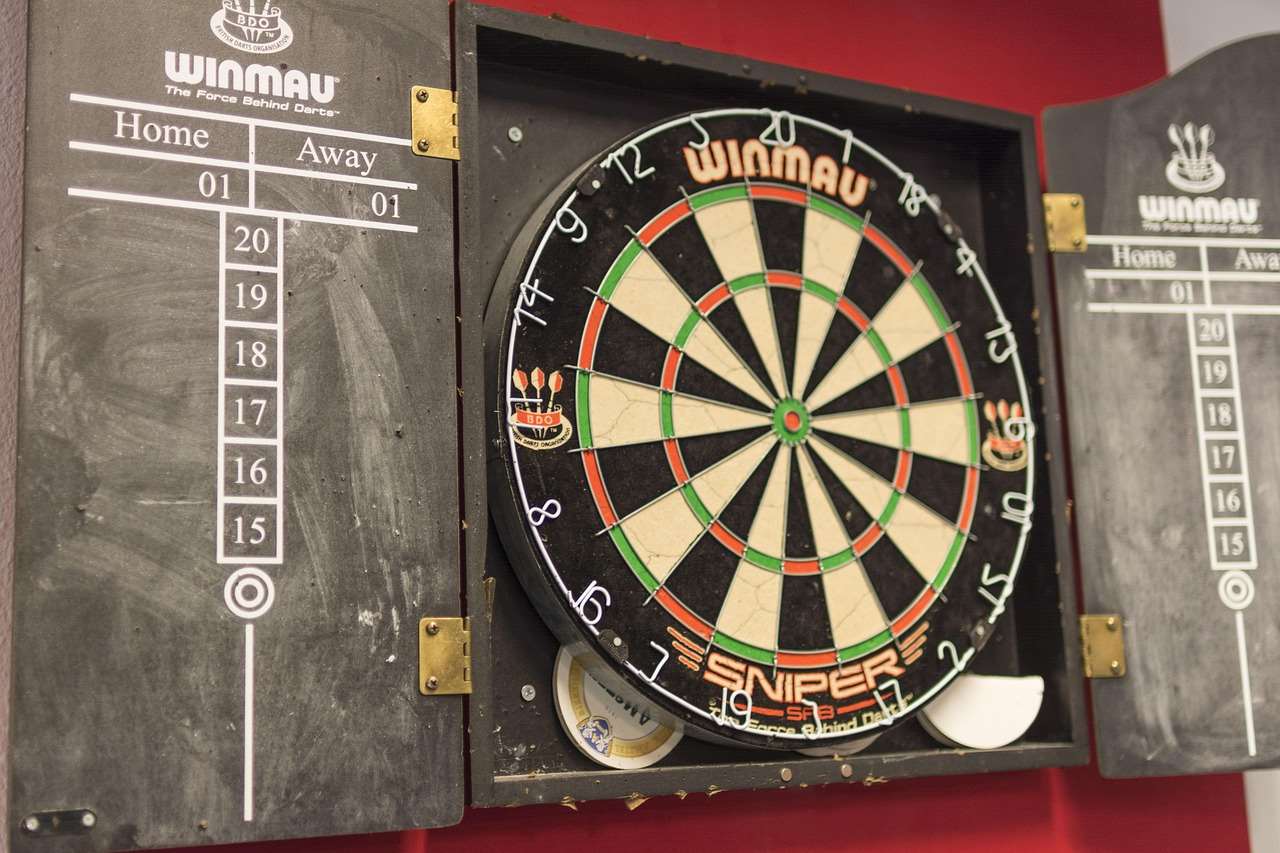Understanding official dart scoring is crucial for both casual players and competitive throwers. This article will explain the fundamental rules of official dart scoring, covering everything from basic scoring methods to advanced strategies. We’ll also explore common mistakes to avoid and offer tips for improving your game.
⚠️ Still Using Pen & Paper (or a Chalkboard)?! ⚠️
Step into the future! The Dart Counter App handles all the scoring, suggests checkouts, and tracks your stats automatically. It's easier than you think!
Try the Smart Dart Counter App FREE!Ready for an upgrade? Click above!
Before diving into the specifics, let’s clarify that official dart scoring generally follows the same principles across most leagues and tournaments. However, slight variations may exist depending on the specific ruleset employed. It’s always best to check the official rules for the particular competition you’re participating in. But this guide will cover the most common and widely accepted methods.
The most common game uses a standard dartboard with numbered segments from 1 to 20, plus an outer bullseye (worth 25 points) and an inner bullseye (worth 50 points). A player’s score is tallied by accumulating points from each successful dart throw. Understanding this basic framework is the cornerstone of understanding official dart scoring.
Understanding the Basics of Official Dart Scoring
The fundamental principle of official dart scoring is simple: hit a segment, and you earn the points indicated on that segment. For example, hitting the number 20 earns you 20 points. Hitting the bullseye (outer or inner) grants you 25 or 50 points respectively. The goal in most games is to be the first player to reach a predetermined total score, often starting from 501 or 301. These are frequently referred to as 501 and 301 games respectively.

Many players use a Digital dart score app to keep track of the scores, which can help streamline the game. This app can be invaluable for managing scorekeeping and is often used in leagues.
Points are subtracted from the starting score (e.g., 501 or 301) after each turn. If a player’s score drops below zero, their turn is invalid, and they must revert to their score before the invalid throw(s). This is crucial in understanding official dart scoring accurately and avoiding unnecessary penalties. This principle adds a strategic layer, encouraging calculated risk-taking and careful shot selection.
Checkout Variations in Official Dart Scoring
To win a game, the player must finish by reducing their score to exactly zero. Finishing a game at exactly zero is called a “checkout”. Different games may vary in their rules, but in most competitions using official dart scoring methods, a player must finish on a double, or on a double and bull (outer or inner). This rule adds another layer of complexity to official dart scoring.
Many players also utilize strategies involving specific checkouts, such as hitting a double 20 to finish a game from 40. The most famous checkout, achieving a score of zero in three darts (three darts on double scores) is known as a ‘darter’, which is an exhilarating feat to watch in a darts championship match. These checkouts add a strategic and thrilling element to the game.
Different Game Formats and Official Dart Scoring Methods
While the basic principles of official dart scoring remain consistent, various game formats exist, each with its unique rules and scoring objectives. Some common game formats include:
- 501: Players start with 501 points and aim to reduce their score to zero, finishing on a double.
- 301: Similar to 501, but starting with 301 points.
- Cricket: This isn’t directly points-based like 501 or 301. Instead, players aim to “close” numbers (20, 19, 18, 17, 16, 15, Bull) by hitting them three times. Once a player has hit a number three times, that number is “closed”. The player then scores points by hitting the closed numbers for more than three times than their opponent. Official dart scoring in Cricket involves intricate rules about scoring after closing a number.
- Around the Clock: Players must hit each number in ascending order, from one to twenty. The first to complete the sequence wins.
- Killer: One number is randomly assigned as the “killer” number. If a player hits the killer number, their score is reset to zero. This keeps the game incredibly tense.

Understanding the specific rules of each game is vital for successful participation. Many professional darters often hone in on a specific game type, becoming experts in that format.
Another exciting aspect of darts is finding darts weird checkouts and scoring unusual combinations that lead to a win. These unique checkouts can be incredibly satisfying.
Common Mistakes to Avoid in Official Dart Scoring
Even experienced players can make mistakes in official dart scoring. Here are some common errors to avoid:
- Miscounting Points: Double-checking your score after each turn is essential. A simple mistake can cost you the game.
- Forgetting to Finish on a Double (or Bull): This is a frequent error, especially under pressure. Always remember the finishing rules for the game you’re playing.
- Incorrectly Applying Scoring Rules: Understand the specific rules for the game before you begin. This includes understanding how points are deducted or added, how numbers are closed and checkouts are determined.
- Not Focusing on Checkout Strategy: Planning your checkout is just as important as your initial throws. Consider the remaining points and how you can best reach zero.
- Mental Game Lapses: The mental side of darts is often overlooked. Stay calm and maintain focus to avoid errors resulting from pressure.

Tips for Improving Your Official Dart Scoring Game
Improving your official dart scoring involves consistent practice, strategic thinking, and attention to detail. Here are some tips to elevate your game:
- Practice Regularly: Consistency is key. Aim for regular practice sessions, focusing on accuracy and consistency of throws.
- Work on Your Technique: A proper throwing grip, stance, and follow-through are crucial for accurate throws. Watch videos and seek feedback to refine your technique. Consider the differences in darts such as a darts tapered barrel.
- Develop a Strategy: Think about your throws before you take them. Plan your checkouts and aim for the highest-scoring segments whenever possible.
- Learn from Your Mistakes: Analyze your game to identify weaknesses and address them through targeted practice.
- Play Against Others: Competitive play is invaluable for improving your game and enhancing your performance under pressure. Join a local dart club such as an oche darts club.
- Use a Scoreboard or App: Keeping track of your scores effectively minimizes the chance of errors. A Digital dart score app makes this easier and more efficient.
Many professional players also emphasize the importance of mental preparation in achieving high scores in their games. Staying focused and maintaining composure under pressure can significantly impact your performance, especially in crucial moments.
Advanced Strategies in Official Dart Scoring
As you become more proficient, consider incorporating advanced strategies into your game. These techniques can significantly improve your scores and increase your chances of winning. Explore various approaches to checkout strategies, understanding different finishing options, and practicing diverse scoring patterns.
For instance, learning to strategically use the double segments can make a significant difference. Mastering doubles is vital in finishing games efficiently. Also, understanding the importance of minimizing scoring errors and the effectiveness of efficient scorekeeping is essential.

The the darts usa website offers valuable resources for learning advanced strategies, as well as details on league regulations and the length of games. Understanding the length of darts match you’ll be playing in can influence your strategy considerably.
The Social Aspect of Dart Scoring
Beyond the technical aspects of official dart scoring, remember the social element of the game! Darts is a highly social sport, bringing people together for friendly competition and camaraderie. Join a local league or club to meet fellow enthusiasts, share tips, and enjoy the friendly rivalry. If you are keen on engaging with fellow dart enthusiasts, you can always check out the darts fan zone.
Remember that part of the enjoyment comes from sharing the experience with others, and a good game always includes good sportsmanship and respectful competition.
Conclusion
Mastering official dart scoring is a journey that combines technical skill, strategic thinking, and a healthy dose of practice. From understanding basic scoring to implementing advanced strategies, this comprehensive guide provides you with the tools to excel in this exciting sport. By focusing on technique, practicing regularly, and understanding the various game formats, you can significantly improve your scores and enjoy the thrilling challenge of darts. Don’t forget to join a local club or league to expand your experience and socialize with other dart enthusiasts!

Start practicing today and unleash your inner darts double nine darter!
Hi, I’m Dieter, and I created Dartcounter (Dartcounterapp.com). My motivation wasn’t being a darts expert – quite the opposite! When I first started playing, I loved the game but found keeping accurate scores and tracking stats difficult and distracting.
I figured I couldn’t be the only one struggling with this. So, I decided to build a solution: an easy-to-use application that everyone, no matter their experience level, could use to manage scoring effortlessly.
My goal for Dartcounter was simple: let the app handle the numbers – the scoring, the averages, the stats, even checkout suggestions – so players could focus purely on their throw and enjoying the game. It began as a way to solve my own beginner’s problem, and I’m thrilled it has grown into a helpful tool for the wider darts community.